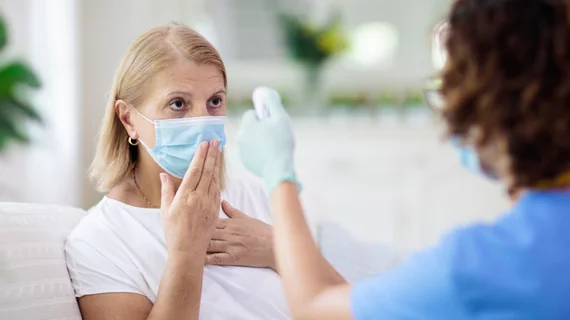One healthcare giant may have missed nearly 1,400 cancers due to pandemic-related drop in screening
During last year’s initial COVID peak period, safety measures led to a steep decline in cancer screenings for a majority of hospitals and care centers. And as a result, many providers feared an imminent rise in cancer diagnoses.
Massachusetts General Brigham—the largest healthcare system in the Northeast—on Thursday published some of the first concrete numbers detailing the pandemic’s potentially deadly impact on these patients.
Comparing exams performed across hospitals, health centers and physician practices within the Boston area system, patients received nearly 50,000 fewer screening tests during the three-month lockdown peak compared to the three months prior.
All told, this decline in screeningsmay have missed about 1,400 cancers and precancerous lesions, Dana-Farber Cancer Institute researchers explained in a research letter published in JAMA Oncology.
“It’s widely thought that fewer people were screened for cancer and precancerous lesions during the first surge of the pandemic, because of limitations on nonurgent medical procedures, restrictions on patient volume, and patients’ concerns about the spread of the virus and the need for social distancing,” co-first author of the study Ziad Bakouny, MD, MSc, with Dana-Farber’s genitourinary oncology center, said in a statement. “For this study, we wanted to document the extent of this decline, and its impact on cancer diagnoses, at a major U.S. health care system.”
For their research, the team gathered data on how many people underwent cancer screening tests—mammograms, low-dose CT, colonoscopies, Pap tests, and prostate-specific antigen exams—and how many were diagnosed with cancer.
During the initial peak of the pandemic spanning March to June 2, providers performed upward of 15,400 exams. That’s compared to 64,269 in the previous three months and 60,344 completed during the same time period in 2019.
The authors actually expected to find a greater amount of misses and noted that the proportion of exams diagnosed as cancer or precancer were higher during the lockdown phase compared to other times. This "silver lining" likely occurred because hamstrung physicians were focused on screening high-risk patients during that initial surge.
Bakouny and colleagues also reported that screening quickly recovered in the three months following June 2, climbing up to nearly 52,000 exams.
The findings are likely applicable to other regions of the country and are particularly important given the current state of the pandemic.
“This investigation is especially timely given that we are currently dealing with a second, and potentially worse wave of the pandemic,” co-senior author Quoc-Dien Trinh, MD, of Brigham and Women’s Hospital, added. “We have learned to leverage a redesigned patient flow, increased use of telehealth, and made other accommodations to allow our patients to continue receiving standard of care cancer screening and diagnosis in the safest possible environment.”

